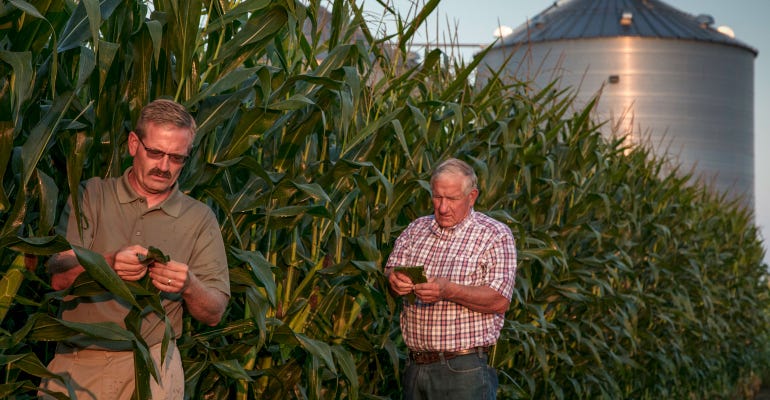March 8, 2019

By Jen Nelson
“The purpose of conducting field crop research is to come up with fact-based answers to farming’s challenging questions,” says agronomy professor Bob Nielsen in Purdue’s “A Practical Guide to On-Farm Research.”
Every growing season, new agricultural technologies and products are introduced to the market faster than land-grant universities can test them. Every farm is different, so whether a new practice will be beneficial to a farmer will vary greatly.
How can farmers make the best decision to invest in new products and practices? One approach is through incremental change — tweaking details each year — and using best judgement to determine whether the practice made a positive difference.
Another option is a side-by-side comparison of a new and current practice. On-farm research builds on these approaches to obtain more robust results and to determine if a new practice is likely to be truly beneficial.
“The notion of conducting on-farm research is not new,” Nielsen says. “Many farmers have routinely conducted their own on-farm trials for years.”
Here are four things to ensure success in on-farm research:
1. Simplicity. Make sure that your objective for the project is clear and that you are only looking at one variable at a time. Include a control or check, and make sure each test strip is at least 400 feet long.
2. Consistency. Manage all your plots the same, except for the research treatment. Use the same variety, seed population, planting date, etc. Make sure all equipment is set correctly before planting or spraying.
3. Replication. Four or more replications is ideal. If data from one of the plots is unusable, you still have three plots to base your conclusions on. Avoid abnormal areas in the field. Keep data separate from different plots; don’t average them together.
4. Accuracy. Keep good written records; don’t just depend on your memory.
Know how you will collect data and handle samples in advance, and make sure your equipment is calibrated.
Benefits and challenges
At Delaware Ag Week in January, the Delaware-Maryland 4R Alliance held an on-farm research and return-on-investment (ROI) session with Josh McGrath and Jordan Shockley from the University of Kentucky to discuss some of the benefits and challenges of on-farm research.
“Don’t get into it unless you’re willing to go all the way,” McGrath said.
Precision ag technology — especially yield monitors, prescription planters and sprayers — makes it easier to do research than before, but it still requires an investment in time and planning, often during the busiest part of the year.
Shockley encouraged participants to expand their perspectives on ROI, not only just looking at profitability but also increased safety and reduced personal risk, reduced financial risk, and environmental benefits. If you can capture and quantify reduced financial risk because of adopting a new practice, he asks, “Is that something you can turn around and take to a banker? How much is that information worth?”
 DO IT YOURSELF: Many farmers want to do their own on-farm research to test out new machines or practices.
DO IT YOURSELF: Many farmers want to do their own on-farm research to test out new machines or practices.

R.C. Willin, a farmer from Seaford, Del., pointed out that on-farm research also offers its own “intrinsic value.” On-farm research, he said, “has often produced more information, and sometimes different information, than what I was originally looking for.” Interpreting those results is one place where additional support is key.
Extension educators and crop consultants can help ensure a successful trial. They can provide guidance on potential strategies that may benefit your farm. They can also help with project design.
One of the best ways for farmers to quickly assess new ideas and technology is to coordinate efforts and work together.
“Bring in your friends,” McGrath said, noting that repeating the same research protocol across multiple farms can help build a robust data set more quickly than testing a new strategy on an individual farm.
For more information, visit the Delaware-Maryland 4R Alliance at 4rmidatlantic.com.
Nelson is the communications coordinator for the Delaware-Maryland 4R Alliance.
You May Also Like




